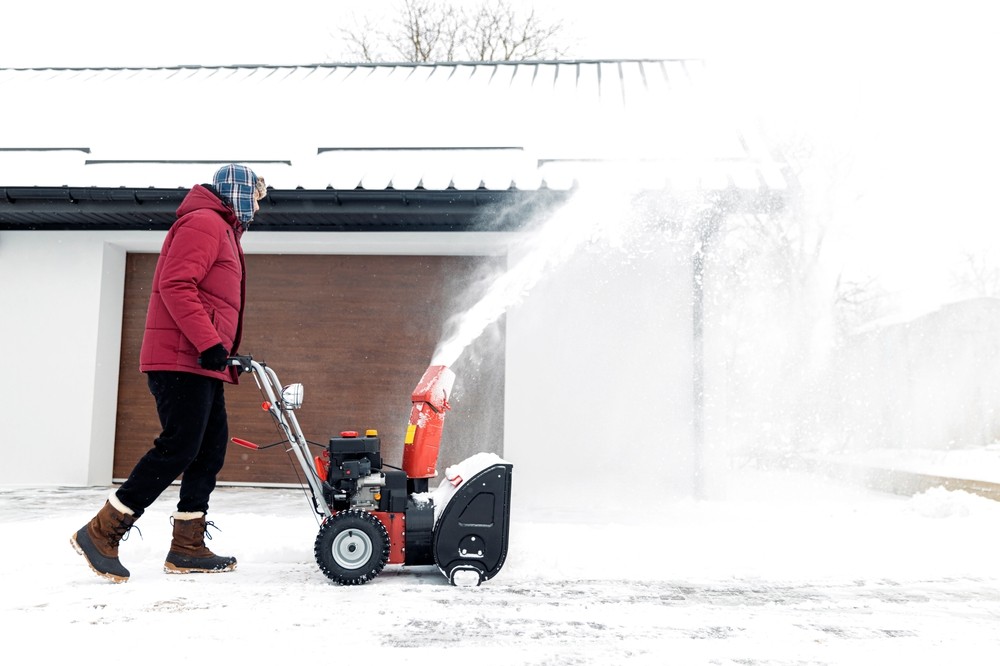Snow removal is a critical task in many regions during the winter months, and choosing the right snow blower can make a significant difference in managing the workload effortlessly. While shoveling snow is an option, it can be physically demanding and time-consuming. Fortunately, snow blowers offer an efficient alternative, and for those exploring this machinery, the primary decision often boils down to choosing between a gas-powered or electric model. Both types come with distinct advantages and potential limitations, so identifying the right fit depends largely on individual needs, budget, and other personal preferences.
The Basics of Snow Blowers
Snow blowers, also known as snow throwers, can be categorized into single-stage, two-stage, and three-stage machines, each with varying power levels and capabilities. Understanding the basic differences between electric and gas snow blowers can help users make informed decisions suitable for their specific conditions:
- Single-stage blowers – Best suited for light to moderate snowfalls, typically used for residential purposes where plowing depth isn’t too significant.
- Two-stage blowers – Designed to handle heavier snow and longer driveways, offering increased power and more features for substantial accumulations.
- Three-stage blowers – Offer maximum power and can tackle the heaviest snowfalls, ideal for commercial use or areas with severe winter conditions.
Electric Snow Blowers
Electric snow blowers include both corded and battery-powered models, each offering advantages for different settings.
Corded Electric Snow Blowers:
These models are typically lightweight, making them easy to maneuver and manage. They often require minimal maintenance compared to gas-powered models, as they don’t entail oil changes, fuel storage, or other upkeep tasks common with combustion engines.
Battery-Powered Electric Snow Blowers:
The cordless models operate on rechargeable batteries, eliminating the need for a constant power source. This advancement offers the flexibility of movement akin to gas-powered variants but with reduced maintenance needs.
Advantages:
- Ease of Use: Electric snow blowers are generally easier to start — often with merely the push of a button — and simpler to operate compared to their gas counterparts.
- Environmental Benefits: They produce zero emissions during operation, making them a more environmentally friendly option.
- Low Maintenance: Absence of fuel and oil reduces maintenance significantly, sparing users regular service routines essential for gas models.
- Quiet Operation: Electric models produce less noise, making them suitable for residential areas.
Limitations:
- Power Limitations: Generally, electric models are less powerful than gas blowers, thus better suited for light snow accumulations (typically up to 12 inches).
- Cord Constraints: Corded models limit movement to the cord length, potentially complicating snow removal over extensive driveways or yards.
- Battery Life Concerns: Battery-powered models have limited run times, necessitating frequent recharges or backup batteries for extended tasks.
Gas Snow Blowers
Gas snow blowers offer robust power and reliability for those experiencing heavier snowfall or possessing larger areas that require regular clearing.
Advantages:
- Powerful Capability: Gas-powered models excel in environments with heavy, wet snow and can effectively clear larger distances, driven by potent engines.
- Diverse Range: With a variety of single-stage, two-stage, and even three-stage models, users can select equipment based on terrain and snow conditions.
- Extended Operation Time: Gas blowers can run for extended periods without worrying about battery life or cord constraints.
Limitations:
- Maintenance: Requires more upkeep, including regular gasoline, oil changes, and potential repairs to fuel lines and engines.
- Noise: Gas models generate significantly more noise, which may be cumbersome in residential areas with noise ordinances.
- Emissions: They contribute to more pollution, an aspect worth considering for environmentally conscious individuals.
Factors to Consider When Choosing
- Size of Area: For smaller driveways or sidewalks, an electric snow blower may suffice. However, for larger properties, a gas model might be more efficient due to its greater power and range.
- Snowfall Volume and Frequency: If the region receives heavy snowfall, a gas snow blower may handle the accumulations better. Areas with light, sporadic snowfalls might find electric models more fitting.
- Environmental Impact: Those prioritizing eco-friendly solutions may prefer electric snow blowers due to their zero emissions during use.
- Budget: Initial costs for electric snow blowers tend to be lower, but users should consider ongoing fuel and maintenance costs associated with gas models.
- Noise Levels: If noise pollution is a concern due to sensitive neighbors or noise ordinances, an electric model would offer quieter operation.
Real-World Scenarios
Considering hypothetical prospects can further elucidate the choice.
Scenario 1: A suburban family with a modest-sized driveway in a region where occasional snowstorms deposit no more than 6 to 10 inches per event might find a corded electric model ideal. The manageable snowfall aligns with the machine’s capacity, minimizing maintenance hassles and fitting tighter budgets. Additionally, the lighter power suits varied family members handling the clearing duties.
Scenario 2: A small business owns a sizable parking lot in an area witnessing frequent, heavy snowfalls. Here, a robust, two-stage gas snow blower serves better, able to tackle prolonged operations resulting in clearer pathways promptly. Despite increased maintenance, the investment safeguards operational efficiency during peak winter months.
Scenario 3: An off-grid property located in a rural, snowbound region relies on a gas snow blower, essential for ensuring access to the main road. Balancing fuel storage and ongoing maintenance ensures preparedness against severe weather events when isolated, emphasizing reliability over other factors.
In contemplating the choice of an electric or gas snow blower, evaluating primary needs, frequency of use, and personal preferences dictates the ultimate selection. Advanced technology may blur some of the lines between both types, yet these distinctions significantly affect performance and maintenance when navigating myriad winter conditions. Selecting the right snow blower enhances safety, convenience, and efficiency during winter seasons, ensuring users are well-equipped to face Mother Nature’s annual visit.



